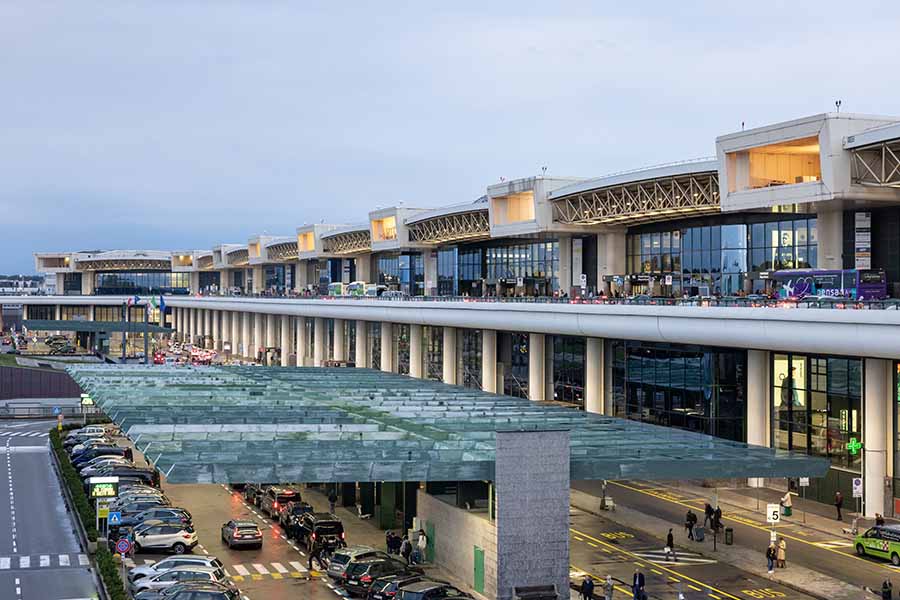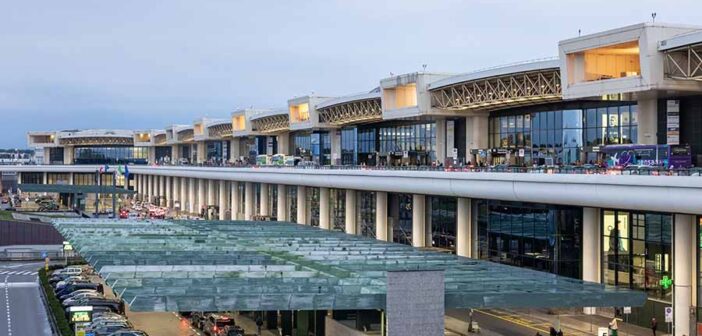
Milan Malpensa Airport, known as MXP, stands as the largest international airport serving northern Italy, located 49 kilometres northwest of Milan’s city centre in Ferno, Varese. Handling 28.5 million passengers in 2024, it connects to over 77 countries with more than 80 airlines, including ITA Airways, easyJet, and Ryanair, making it a key gateway to Lombardy, Piedmont, Liguria, and Switzerland’s Ticino canton. Its two-terminal layout, modern amenities, and efficient transport links offer a practical experience for travellers exploring Milan or connecting globally.
The passenger experience at MXP is generally smooth, though its size and traffic require planning. Terminal 1, the main hub for most airlines, is divided into three concourses: A for Schengen regional flights, B for non-Schengen, and C for Schengen long-haul. Terminal 2, exclusively used by easyJet, is smaller and older, with fewer amenities. Check-in and security in Terminal 1 typically take 30 to 45 minutes, while Terminal 2 can see longer queues during peak summer periods, extending to an hour.
Passengers are advised to arrive two hours early for domestic flights and three for international to account for security and immigration. The FaceBoarding facial recognition system in Terminal 1 speeds up boarding for eligible routes, and Fast Track lanes, available for purchase from €9, reduce wait times. Some travellers note confusing signage, particularly for Terminal 2 transfers, and bus boarding to planes can be inconvenient in poor weather. Accessibility is well-supported with Sala Amica lounges for reduced mobility passengers, ramps, lifts, and wheelchair assistance, though pre-booking with airlines is recommended.
Access to the airport is convenient, with robust transport options. The Malpensa Express train connects both terminals to Milano Centrale (50 minutes, £11) and Milano Cadorna (30 minutes, £11), running every 20 to 40 minutes. Buses, including Terravision and Malpensa Shuttle, depart every 20 minutes to Milano Centrale, taking 45 to 60 minutes for £8 to £10.
Taxis to the city centre cost around £95, while private transfers offer a hassle-free alternative for families or those with luggage. Car rental agencies like Avis, Hertz, and Sixt are available in both terminals, ideal for exploring northern Italy. The A8 motorway ensures a 45-minute drive to Milan, though traffic on the A51 or construction can add delays. Parking is plentiful, with 3,000 spaces in Terminal 2’s Easy class lot and 1,100 in Terminal 1’s Holiday class, starting at £19 per day. A free shuttle bus runs every 7 to 15 minutes between terminals, taking 10 to 15 minutes.
The airport’s layout is clear but expansive, particularly in Terminal 1, which spans five levels: car rentals and the train station on level -1, arrivals on level 0, departure gates on level 1, check-in on level 2, and restaurants on level 3. Terminal 2 is simpler, with arrivals and departures on the ground floor and boarding on level 1. Terminal 1’s concourses require long walks, though moving walkways and a planned Concourse K by 2029 aim to ease navigation. Terminal 2’s compact design suits quick turnarounds but can feel crowded. Congestion at security and non-Schengen immigration in Terminal 1 can slow progress during peak times, so checking gate assignments via the airport’s app or Flightradar24 is wise.
Dining and retail options are extensive, especially in Terminal 1. Airside, Obica Mozzarella Bar serves pasta and pizza, while Panino Giusto offers panini with regional ingredients like truffle oil. Terminal 2 has fewer options, with basic cafes and a small duty-free shop. Duty-free areas in Terminal 1 feature luxury brands like Gucci and Prada, alongside local souvenirs, though prices are higher than in Milan. Travellers recommend dining in the city for better value. Free unlimited Wi-Fi, via the “MALPENSA FREE WI-FI” network, is reliable up to 20Mbps, and charging stations are plentiful.
Facilities cater to diverse needs. Luggage storage in Terminal 1’s arrivals area costs £3.50 to £4 per item daily, open 6:00 AM to 10:00 PM. Securebag offers baggage wrapping for £10. Nine lounges in Terminal 1, like Sala Monteverdi and Sala Pergolesi, provide showers, snacks, and Wi-Fi for £25 to £35, while Terminal 2 lacks lounges. A pharmacy, medical centre, and chapel are available in Terminal 1, and currency exchange desks operate in both terminals. No free showers exist, but lounge access includes shower facilities. Smoking is restricted to indoor airside areas in Terminal 1 and outdoor zones landside. The airport operates 24/7, but armrest-equipped seating limits overnight comfort. Nearby hotels, like the Sheraton in Terminal 1, start at £139 per night.
On-time performance is generally solid, with around 600 daily flights. Delays, averaging 15 to 30 minutes, can stem from high passenger volumes, weather, or air traffic control issues. The single-runway setup and peak-season congestion can exacerbate delays. Real-time updates are available via the airport’s website or Flightradar24. EU regulations allow up to €600 compensation for delays over three hours if airline-related.
Connections are efficient in Terminal 1, with a minimum connection time of 60 minutes for both domestic and international flights. Terminal 2’s point-to-point easyJet flights lack protected connections, requiring passengers to re-clear security. The free shuttle or Malpensa Express train (7 minutes) facilitates terminal transfers, though non-Schengen immigration can take 30 minutes. Popular routes include Rome, Paris, and New York, with ITA Airways and Emirates as key carriers. Checking terminal and airline details ensures smooth transfers.




